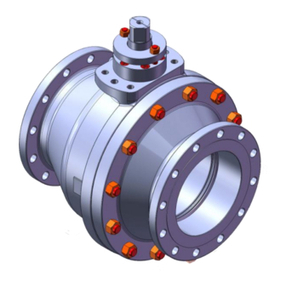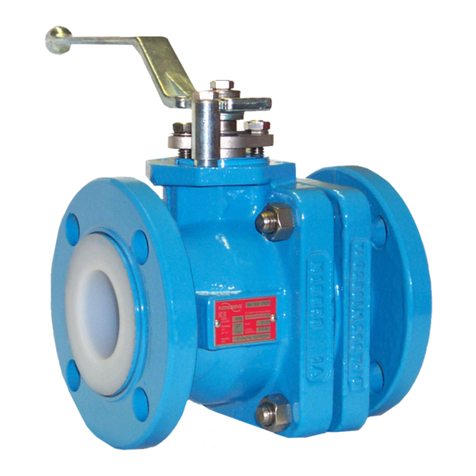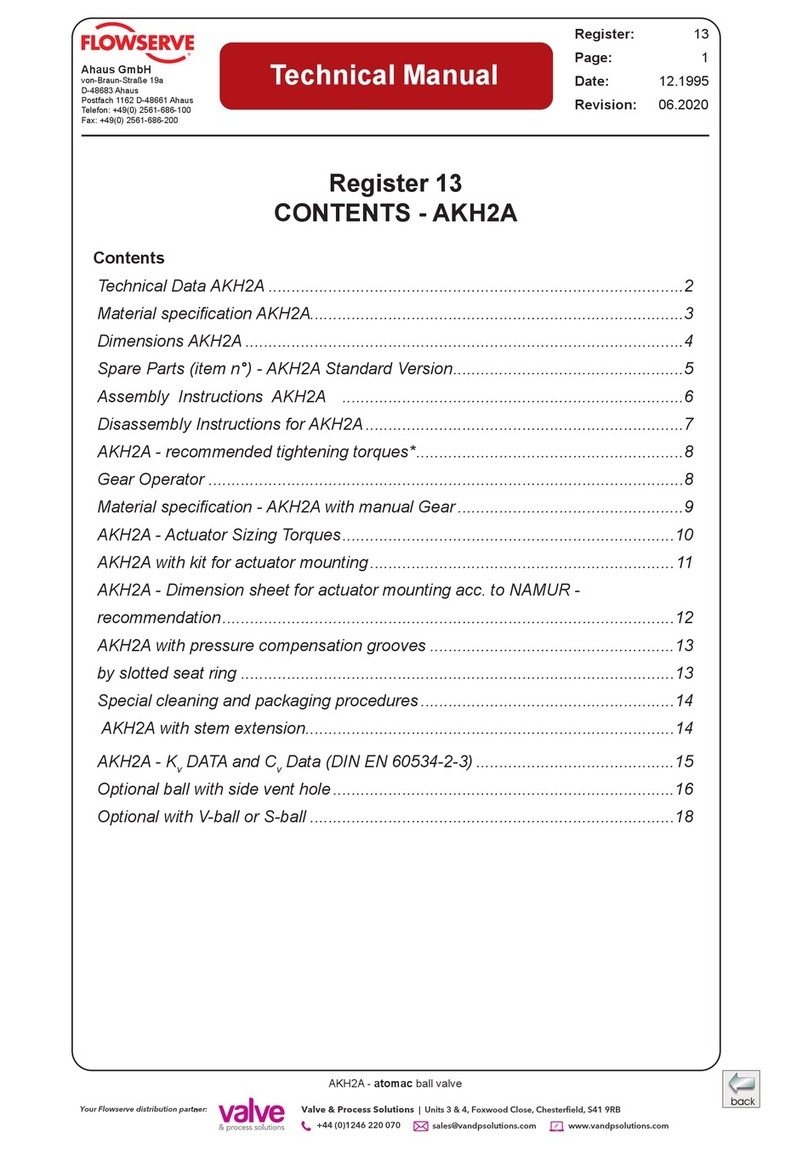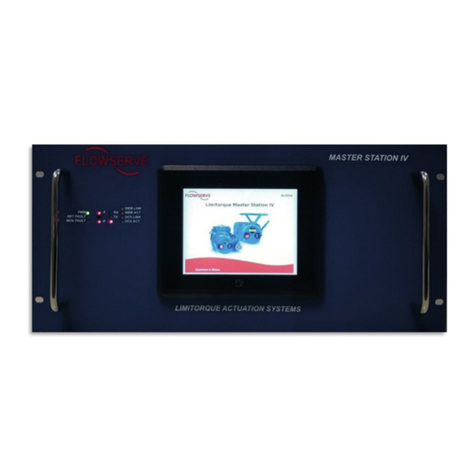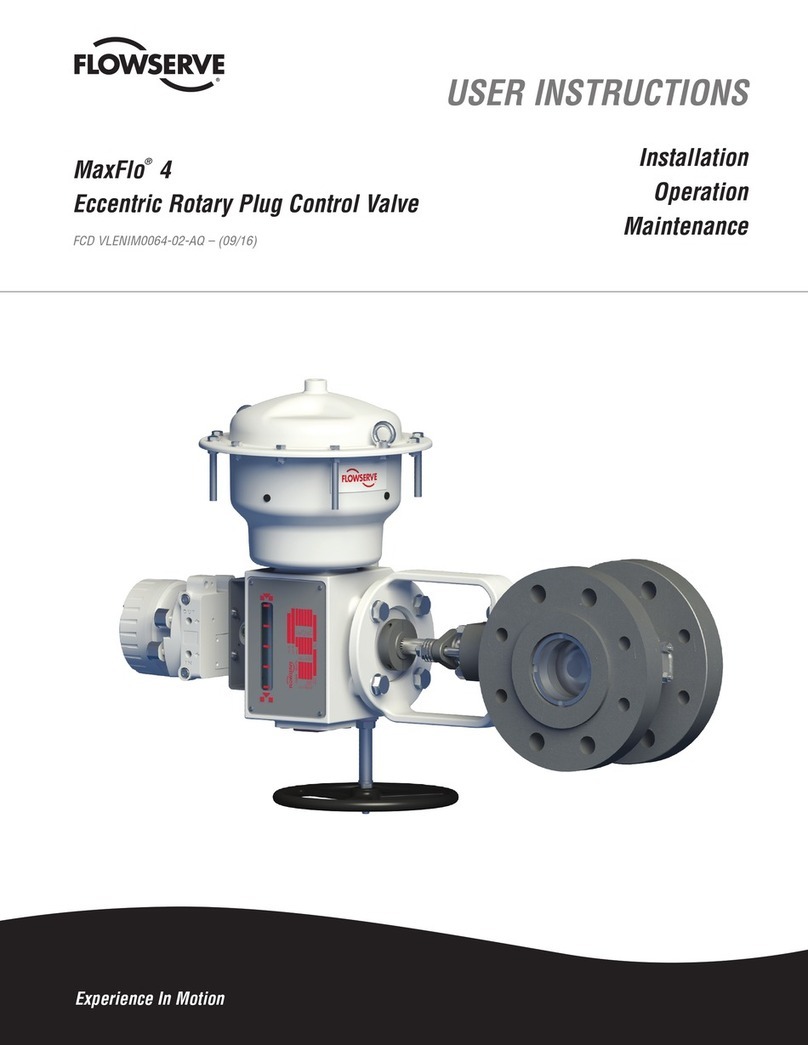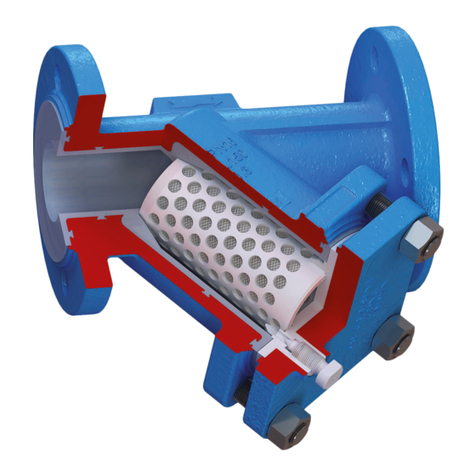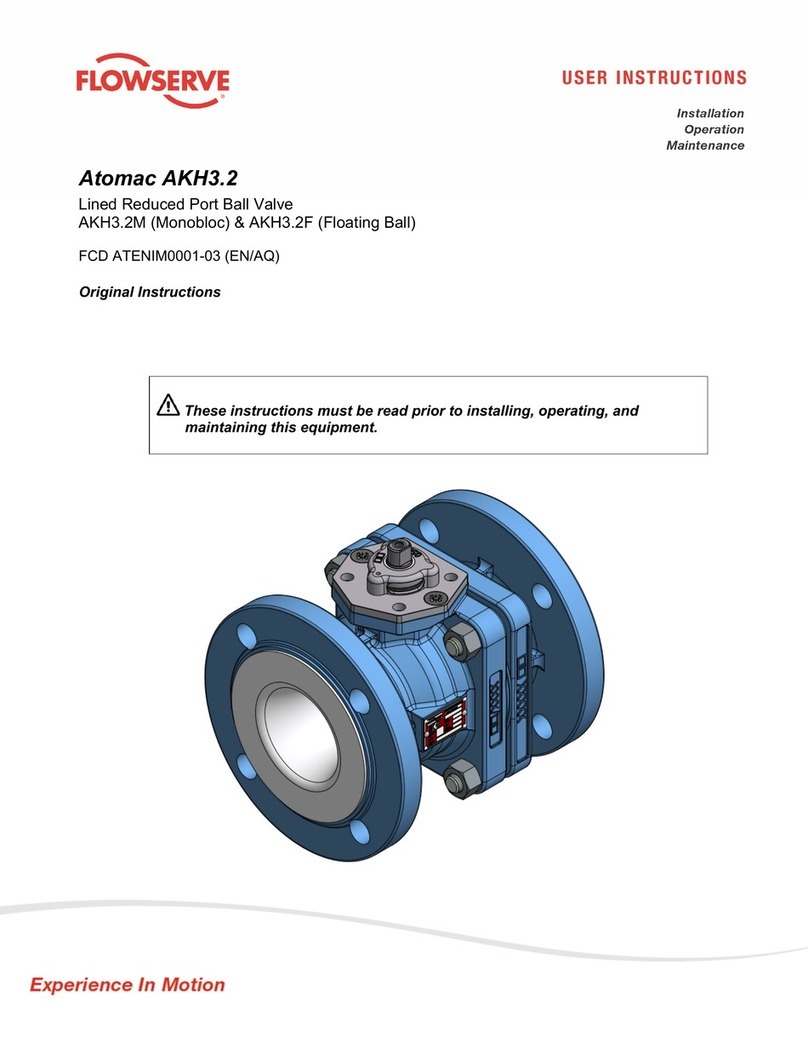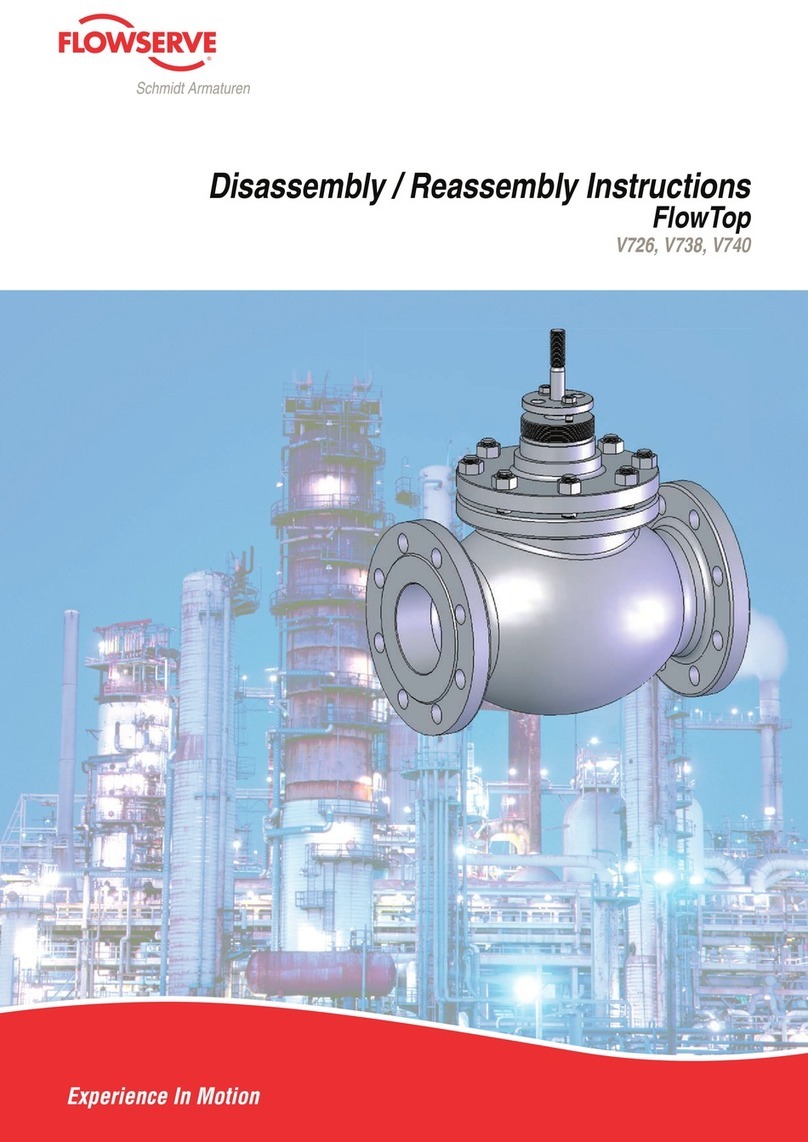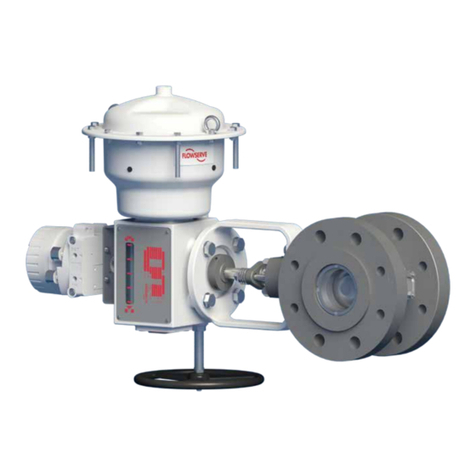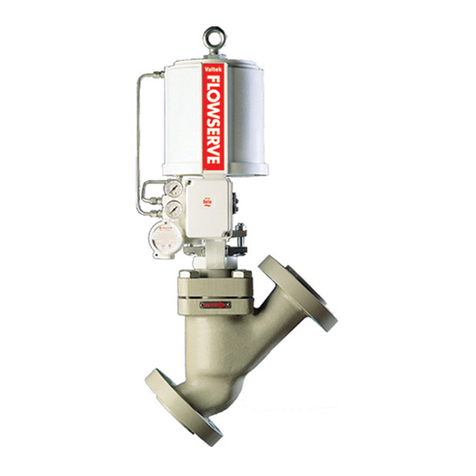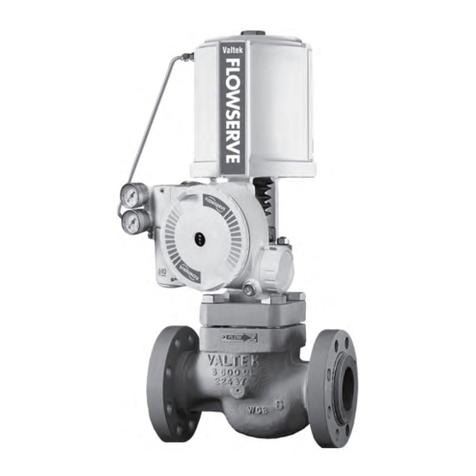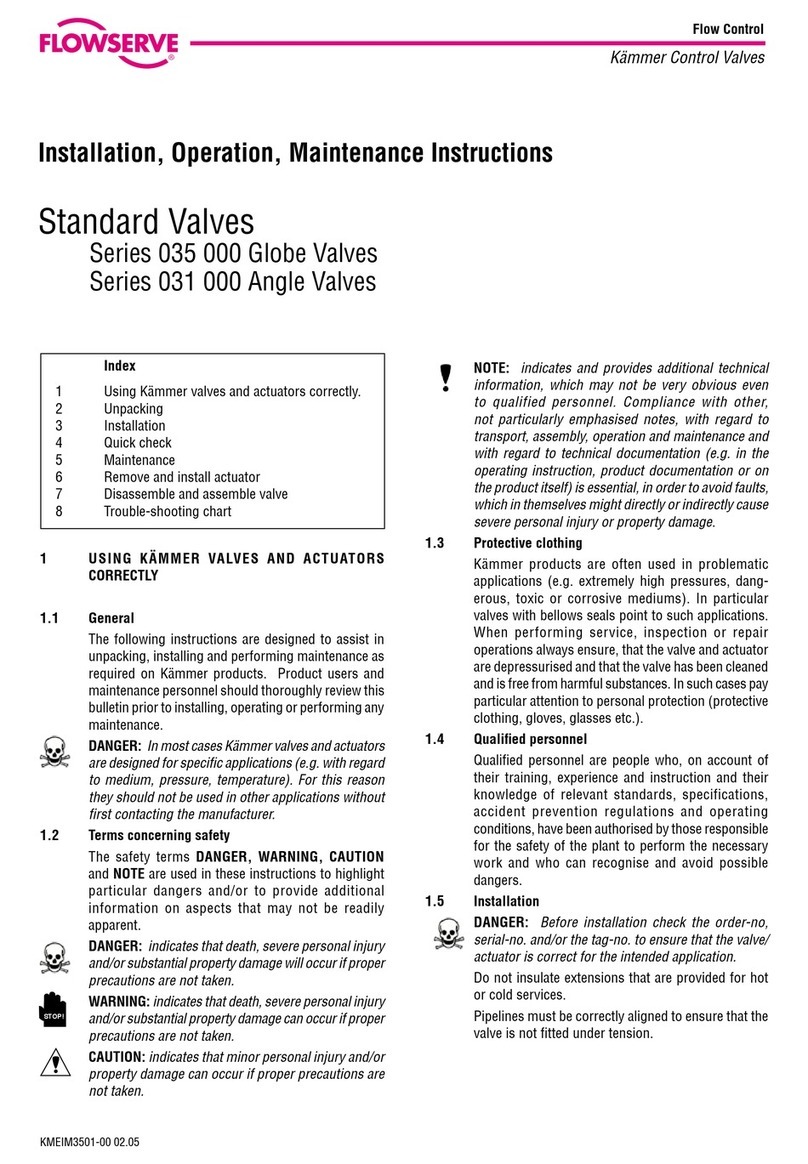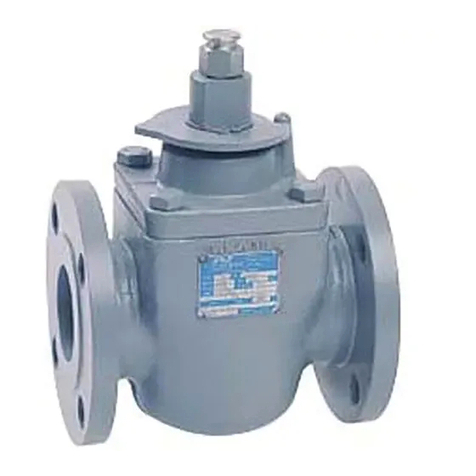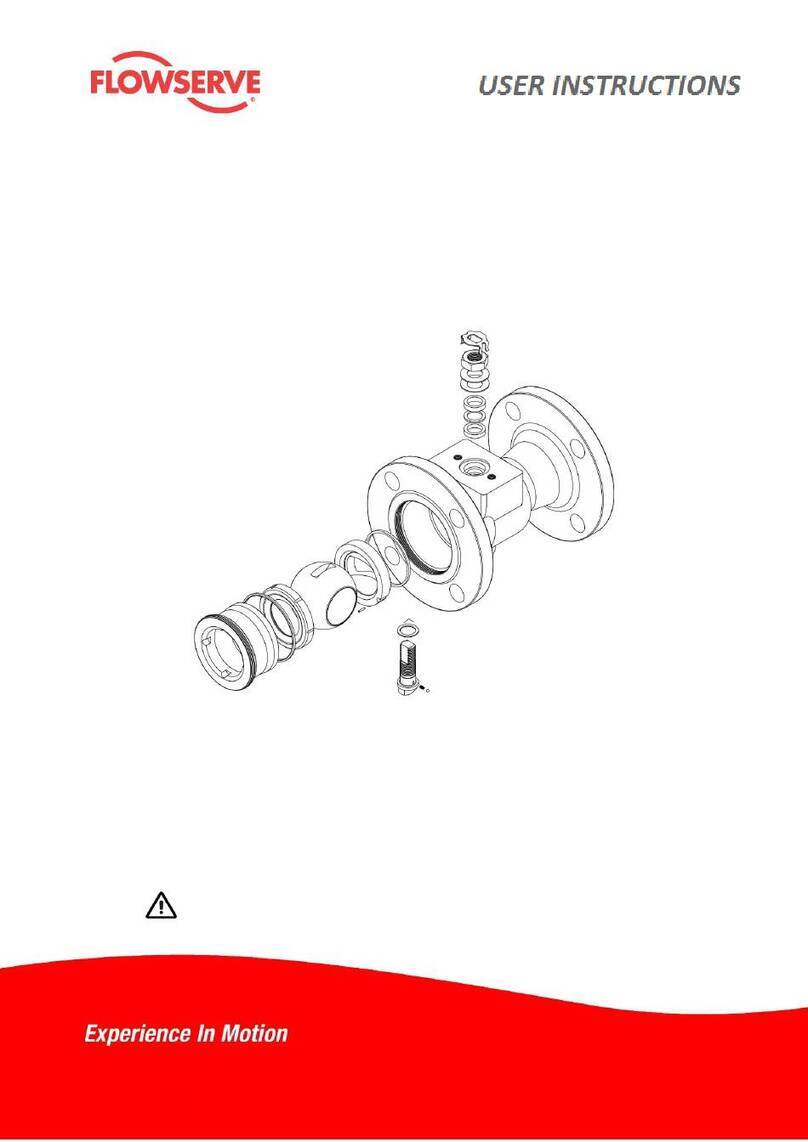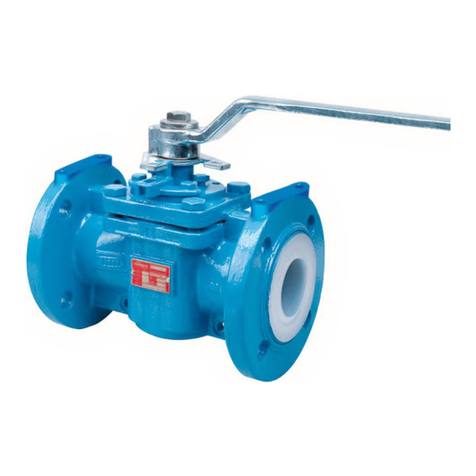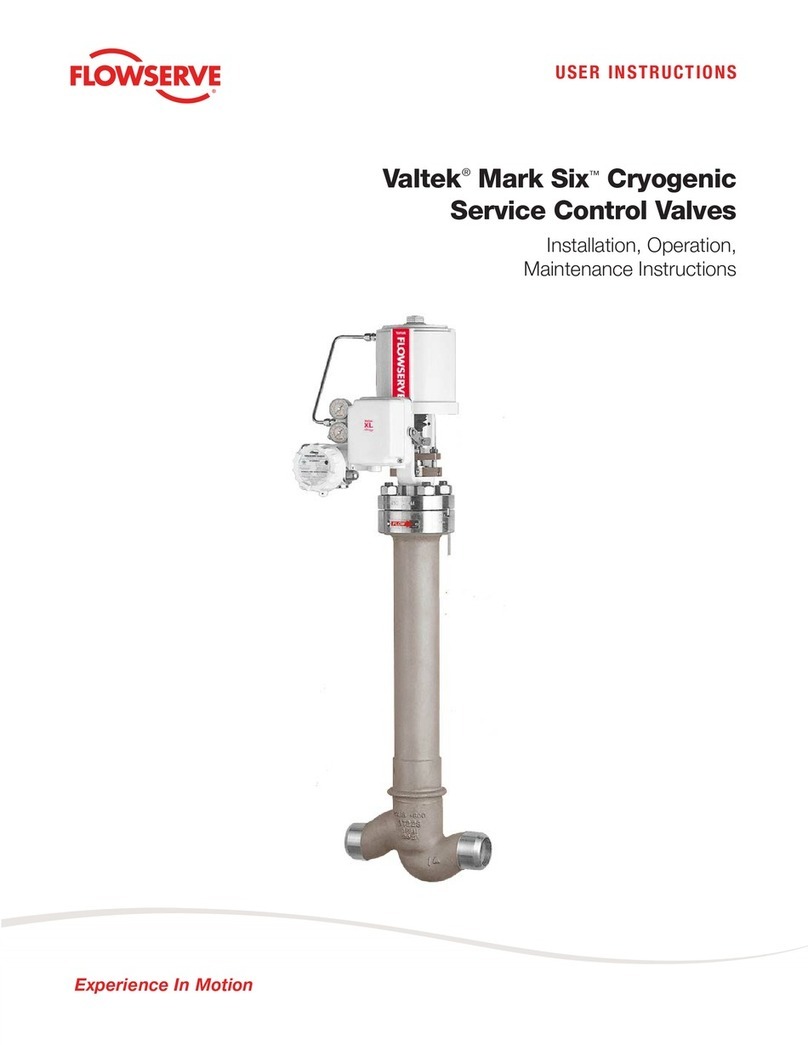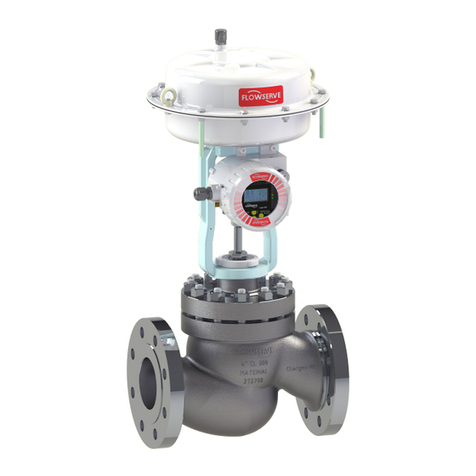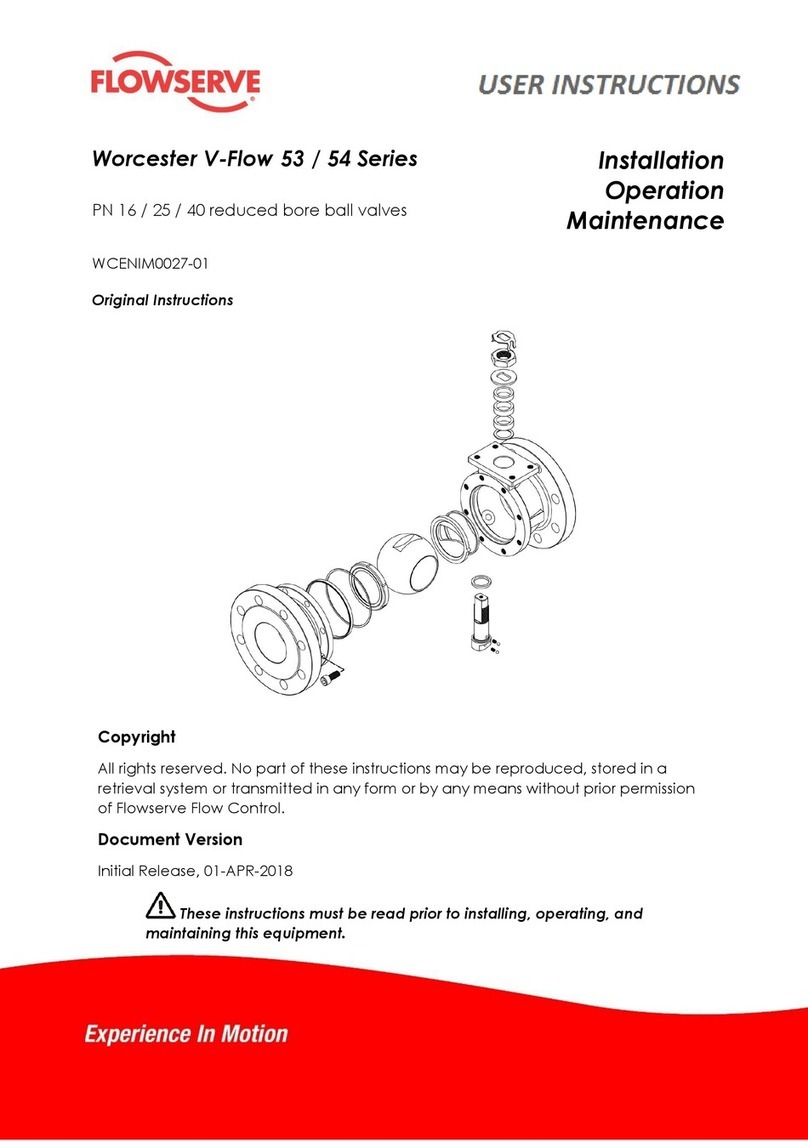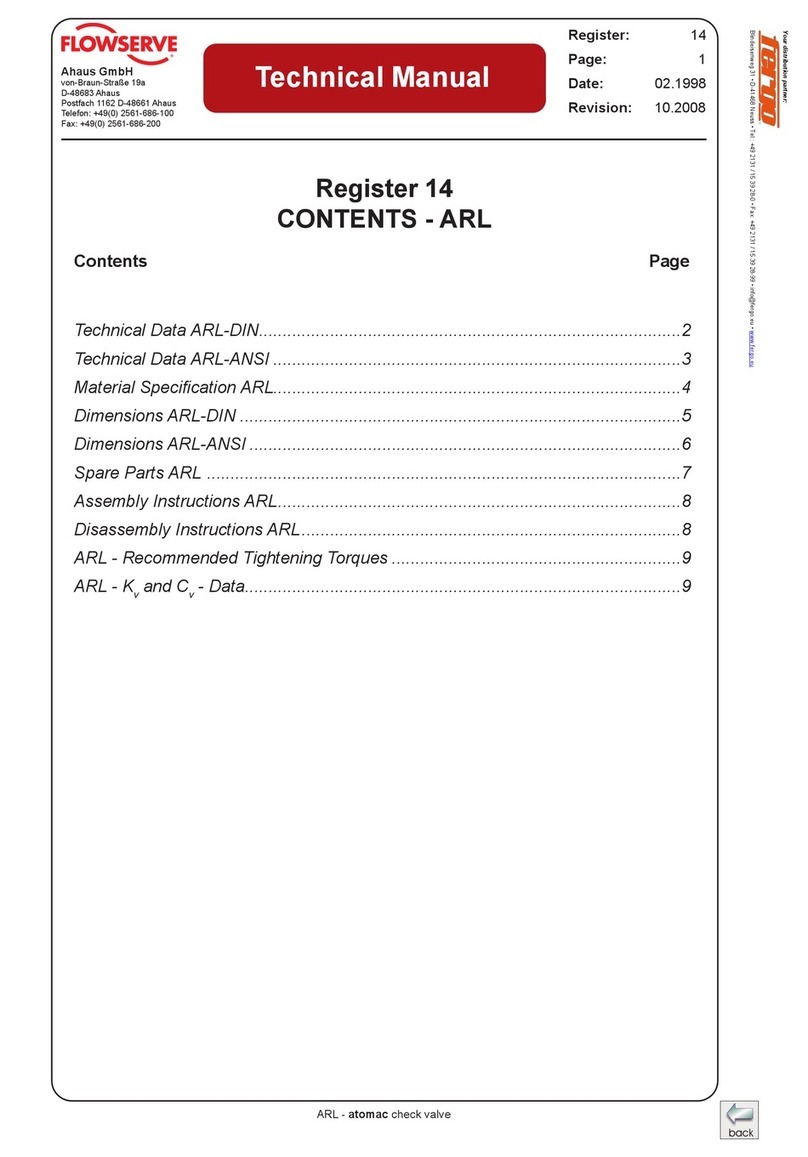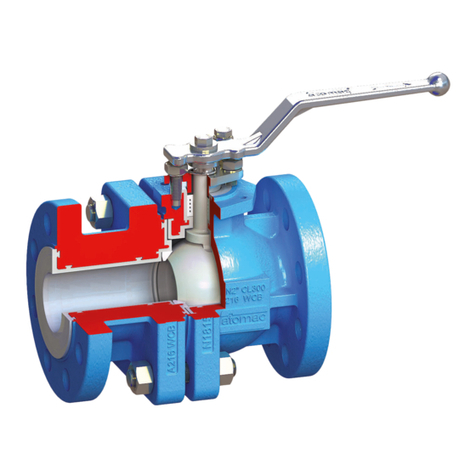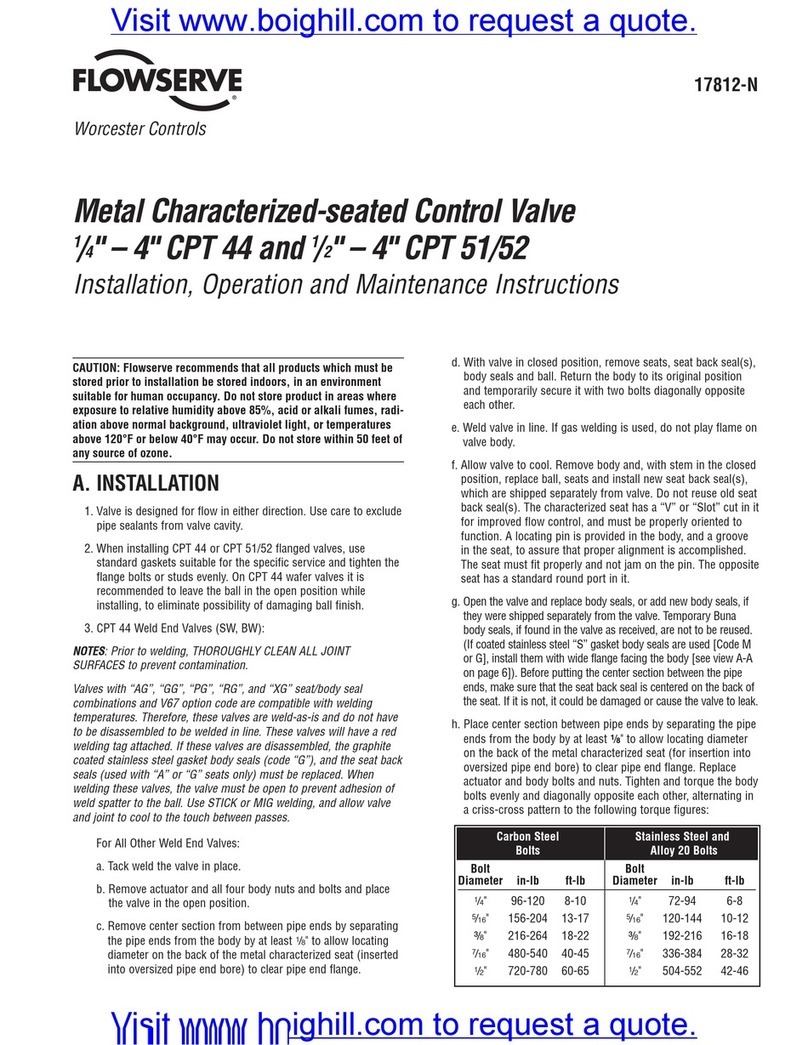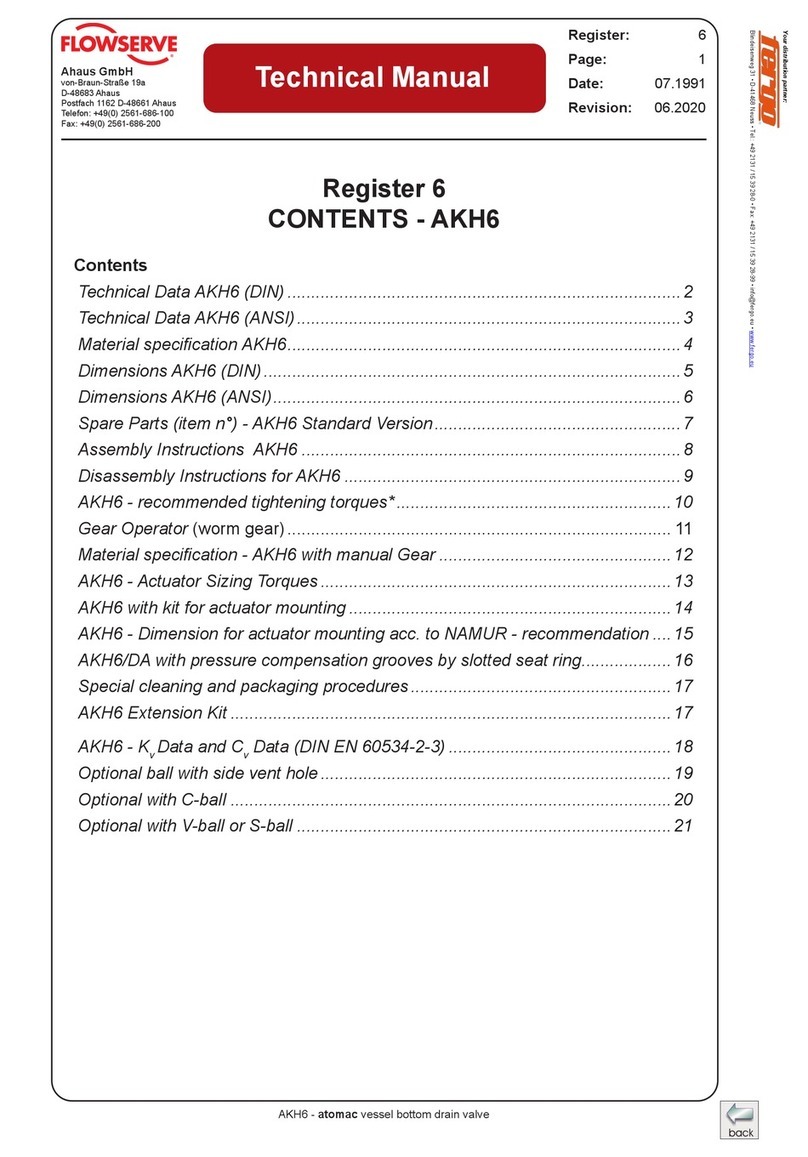
6-4
Inspecting the Screwed-in Seat Ring
1. Unscrew seat ring using a seat ring assembly tool.
NOTE: Flatsaremachinedonthe tool so a wrench
may be used to turn the seat ring. Assembly tool
supports are sometimes needed to keep the as-
sembly tool aligned properly in the seat ring.
2. Ifnecessary, remachinetheseatsurface. Theseat
angle on the seat ring is 33 degrees.
CAUTION: Insure concentricity of seating sur-
face with the outside diameter of the seat ring.
3. Install seat ring using a seat ring assembly tool.
Reassembly of Mark Six
1. Install a new bonnet gasket.
2. Carefullylower plugasfaras itwillgointothebody.
3. Slidethebonnetactuatorassemblyoverplugstem.
4. Insert guides and packing into the bonnet.
5. Place the gland flange onto the plug stem.
6. Screw the actuator stem onto the plug stem by
rotating the actuator in a clockwise direction.
CAUTION: Do not allow plug to rotate. Leave
two or three threads exposed for air-to-close
valves. For air-to-open valves, screw the plug
stem as far as it will go into the actuator stem.
7. Assemble yoke clamp or tighten the yoke bolts.
8. Cycle the valve to retract the plug.
9. Theplugheadseals,whenused,makeitnecessary
to drive the plug into the body using the actuator.
Partiallyboltdown the bonnet flangeandsupplyair
to upper actuator port to extend the plug. Repeat
operation, if necessary, to bring bonnet fully down
into the body.
10. Tighten two opposing bonnet bolts one-sixth turn.
Tighten all bonnet bolts one-sixth turn at a time,
alternating between opposing bolts. Firmly tighten
all nuts evenly and completely, using full wrench
force to compress the gasket and seat the bonnet
metal-to-metal in the body. Proper tightness re-
quires considerable force; however, the bottoming
of the parts metal-to-metal can easily be felt
through the wrench.
CAUTION: Insufficient tightening will result in
improper gasket compression.
11. Adjust stem engagement for air-to-open valves
only, using the following procedure.
NOTE: Proper stem engagement is essential on
air-to-open valves to provide stiff, stable operation
as the valve throttles near the seat.
Cycle the valve to closed position. Observe plug
positionasshownbythestrokeindicatorplate. This
position is the bottom of the actuator piston stroke.
Cyclethevalvetoopenposition. Screwtheplugout
of the actuator one-half turn. Cycle the valve to
closed position. Observe the plug position as
indicated by the stroke plate. Repeat this proce-
dure, comparing plug position each time until the
indicated plug position is about 1/8 inch above the
initial or bottom position. This procedure must be
followed to assure stiff stable operation as well as
tight shutoff. Tighten all nuts evenly and com-
pletely, using full wrench force to compress the
gasket and seat the bonnet metal-to-metal in the
body. Proper tightness requires considerable
force;however,thebottomingofthepartsmetal-to-
metal can easily be felt through the wrench.
12. Tighten the stem clamp.
13. Tighten packing nuts to slightly over finger-tight.
14. Adjust stroke indicator position to indicate closed
position when valve is closed.
Removing Actuator, Including Yoke
(Without Disassembling the Valve Body
Subassembly)
1.Fully retract the plug until the stroke indicator is
pointing to the open position.
2.Loosen the stem clamp.
3.Loosen the gland flange.
4.Remove the yoke clamp (or yoke bolts if used).
5.Turn actuator completely off the plug and bonnet.
CAUTION: Do not allow the plug stem to rotate.
Flats are machined on the stem so it may re-
quireahoist. Ifalifting ringisnotprovided,use
lifting straps around the yoke legs.
Reassembling Actuator, Including Yoke
1.Lift the plug off the seat and turn the actuator onto
the plug. On air-to-open valves screw the actuator
stem onto the plug stem as far as it will go. On air-
to-close valves, leave two or three threads exposed.
CAUTION: Do not allow the plug to turn on the
seat at any time. Do not turn the plug in the
bonnet. Flatsaremachinedontheplugstemso
it can be held with a wrench.
2.Assemble yoke clamp or tighten yoke bolts.
3.Adjust the stemengagement for air-to-open valves
only, according to the procedure outlined in the
“Reassembly of Mark Six” instructions, step 11.
4.Cycle the valve to closed position.
5.Slide the stem clamp on the actuator stem so
pointer indicated “closed” on the stroke plate.
6.Tighten the stem clamp.
7.Tightentheglandflangenutsevenlytoslightlyover
finger-tight.
